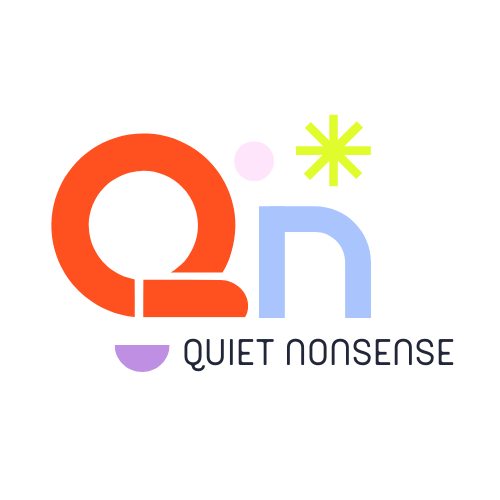The Future of Web Design: Trends That Will Shape 2025
The world of web design is constantly evolving, and staying ahead of the curve is essential for businesses looking to maintain a competitive edge. This year, several key trends are emerging that will redefine how websites are designed and experienced. From cutting-edge user interfaces to the rise of immersive technologies, the future of web design is full of exciting possibilities.
Let’s dive into the trends that are set to shape the digital landscape in the coming years.
1. Minimalism Meets Bold Design
In 2025, simplicity will remain at the heart of web design, but with a twist. While minimalism continues to be popular, designers are adding bold elements to make websites stand out. Expect to see more striking typography, vibrant colors, and dynamic layouts—all while maintaining a clean, user-friendly interface. The goal will be to create websites that are not only visually appealing but also easy to navigate.
Why it matters: Minimalism ensures your website remains focused and easy to use, while bold design elements will help you grab attention and stand out from the competition. It’s the perfect blend of simplicity and impact.
2. Dark Mode Is Here to Stay
Dark mode has become increasingly popular, not just as a personal preference, but as a web design trend. Many websites and apps already offer a dark mode option, and this year, it will be an industry standard. Dark backgrounds with light text provide a modern, sleek look, and they are easier on the eyes, especially in low-light environments.
Why it matters: Dark mode not only looks visually striking but also improves readability and user experience, especially for mobile users. If you’re not already offering a dark mode option, you’ll want to start considering it.
3. Personalized User Experiences
Personalization has been a buzzword for a while, but in 2025, it will reach new heights. Websites will become even more tailored to individual users’ needs and preferences. Expect personalized content, dynamic recommendations, and even customized layouts based on user behavior, demographics, and past interactions.
Why it matters: Personalized experiences keep visitors engaged and coming back. By offering customized content, you create a stronger connection with your audience, which leads to higher conversion rates and brand loyalty.
4. Immersive Technologies: VR & AR Integration
Virtual Reality (VR) and Augmented Reality (AR) are no longer just futuristic technologies—they are quickly becoming integral parts of web design. This year, more businesses will integrate VR and AR elements into their websites to offer immersive, interactive experiences. Whether it’s virtual product demos, 360-degree views, or AR-based shopping, these technologies will make the web more engaging and interactive.
Why it matters: Immersive technologies create memorable experiences that engage users in ways traditional websites can’t. By integrating VR or AR, your website can stand out as a cutting-edge platform that enhances the customer experience.
5. AI-Powered Web Design
Artificial intelligence is revolutionizing many industries, and web design is no exception. AI will continue to play a big role in web development, from automated design tools to smart chatbots and virtual assistants. AI can analyze user data, predict behavior, and even help with design decisions, allowing for faster, more efficient website creation.
Why it matters: AI will streamline the design process, reduce costs, and improve user interactions. Whether through smarter search functions or AI-based design suggestions, AI will make websites more intuitive and effective.
6. Mobile-First Design with Faster Load Times
As mobile usage continues to dominate, websites are designed with mobile-first principles. This means websites will be optimized for mobile devices before anything else. In addition, faster load times will be a priority, as users expect near-instant access to information. Expect websites to have faster performance, optimized images, and a better overall mobile experience.
Why it matters: A mobile-first approach ensures your website is accessible and functional on all devices, leading to better user experience and higher SEO rankings. Speed and mobile optimization are crucial for reducing bounce rates and increasing engagement.
7. Voice Search and Conversational Interfaces
As voice assistants like Siri, Alexa, and Google Assistant become more embedded in our daily lives, websites will need to adapt to voice search, allowing users to interact with them using natural language. Whether through voice-activated searches or interactive voice-based elements, this trend is going to make websites more intuitive and user-friendly.
Why it matters: Optimizing for voice search and incorporating conversational elements makes your website more accessible, helping you stay ahead of SEO trends and improving the user experience.
Ready to Get Ahead of the Curve?
At Quiet Nonsense, we’re always thinking ahead when it comes to web design and development. Whether you’re looking for a website refresh, a sleek new design, or a full-scale rebuild, our expert team is here to bring your brand’s vision to life. We specialize in WordPress and Squarespace websites that are not only visually stunning but also function seamlessly for an exceptional user experience.
Our web development services include everything from custom web design to mobile-first strategies, SEO optimization, and more. If you’re ready to make a lasting impression online and stay ahead of these exciting web design trends, we’d love to collaborate with you.
Contact us today to start planning your website’s future!




